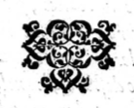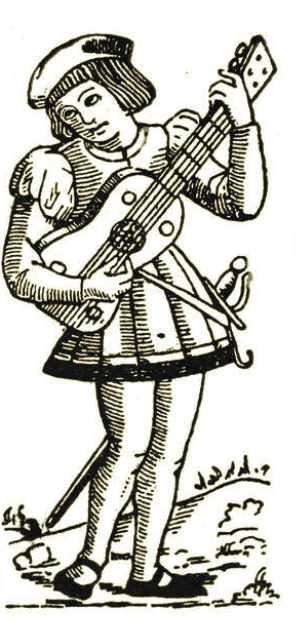reface
As Juan Bermudo described in 1555 in the preface of his Declaración de los instrumentos musicales, some musicians have performed for thirty years without any interest in understanding of what they were doing. My biggest motivation for this research is to broaden and apply my contextual knowledge of sixteenth century polyphonic music, and provide a toolbox for future musicians to approach the style in a historically informed manner. In my opinion, to be a historically informed musician nowadays does not simply mean performing a composition with perfect technique on a historically accurate instrument. I have always believed there must be something more, which will, step by step, open this amazing world of hidden knowledge.
In his text, Juan Bermudo was confirming almost everything I was doubting during my previous studies regarding my performance practice on historical plucked instruments. He was one of the first ones who paid attention to instrumentalists, not just to singers. To be an instrumentalist does not mean that you should be an expert only on the technical fluency of your instrument and its literature. In my personal experience, collaboration with singers has allowed me to deepen my knowledge of vocal polyphony in order to better understand and perform renaissance repertoire on plucked instruments. After working with singers, everything started to make sense and the pleasure from playing this music on the vihuela was incomparable with how I played previously. In earlier centuries, the line between the instrumental and vocal fields was extremely thin, therefore how can we approach historical performance practice in keeping with this close relationship? It was indeed satisfying to find in Declaración sentences such as: “Players are often guilty of wanting to play fantasies when they are just starting to play. Even though they may know counterpoint, unless [this counterpoint] is as good as that of the above-mentioned musicians, they should not play fantasies too soon, so as not to form bad habits.”1 I am guilty too; I also started with fantasías instead of Bermudo’s methodological approach of building this skill starting with two-voice polyphony. I thought I could be a great solo lute player by immediately playing the most difficult pieces. Through reading Bermudo’s text, I realized my former approach had major limitations and with this thesis, I would like to try to change at least my point of view on how to become a vihuela player, not just a former guitar player playing vihuela.
Three renowned experts will help me through this journey: Juan Bermudo, Cristóbal de Morales, and Miguel de Fuenllana. By using intabulated examples of Morales’s music contained in Fuenllana’s Libro de música para vihuela, intitulado Orphénica Lyra, and following instructions by Juan Bermudo, I hope to find a method of intabulating vocal music for vihuela in order to better understand this important process. Before I start with process of intabulating, I will introduce a few chapters of general overview necessary for a contextual overview of the topic, because I believe that a more complete picture of the historical/socio-political climate will provide an important basis for further understanding. Therefore, I will focus mostly on two Spanish rulers: Charles V. and his son Philip II. The time of the vihuela was very limited and its most important moments correspond with the rule of these two aforementioned kings. By focusing on their lives, I will describe the political situation of the Spanish Kingdom during the 16th century, which hopefully could lead to some answers about this plentiful occurrence of intabulations of sacred music in collections of surviving vihuela music. Following the chapter describing the historical climate in 16th-century Spain, I will focus on the instrument itself, as I do realize that vihuela could be less familiar to some readers. I will briefly describe the background of its origin and history before it became one of the most prominent Spanish instruments of the 16th century. The names of the most famous vihuela players are generally known: Luis de Milán, Alonso Mudarra, Luis de Narváez, Miguel de Fuenllana, Enriquez de Valderrábano, Diego Pisador, and Esteban Daza. In this chapter, I will also introduce some other less known vihuela players and vihuela builders, which were also important in the development of this instrument. The next chapter of this work will introduce the most important maestros, including all the renowned vihuela players mentioned above with emphasis on Miguel Fuenllana, together with Juan Bermudo and Cristóbal Morales. Following Bermudo’s advice, after knowing the general background, I will start to focus on the intabulating process itself. I will explain the step-by-step process according to Declaración de los instrumentos, focusing mostly on chapters related exclusively to intabulations. I will use a transcription of the tabulatures of Morales’s pieces intabulated by Miguel de Fuenllana, comparing them with the vocal facsimile contained mostly in Morales's book of masses. One can wonder: why music by Cristóbal de Morales? Bermudo offer us this answer: “In the masses of Cristobal de Morales, you will find much music to intabulate, with so many and such good qualities that I lack the words to describe them. The person who applies himself to this music will not only become wiser, but devout as well.”2 In contrast to the Italian intabulating practice, the Spanish vihuela intabulations tend to be very literal. Although there are several moments of interest in the Spanish way of intabulating, which are important to understand. After this chapter, I hope to have the knowledge to be able to make my own vihuela intabulation of pieces by Cristóbal de Morales according to the Spanish intabulation process. As this is still a learning process, I will describe steps of my intabulating as well.
The development of Historically Informed Performance Practice is truly impressive, but historically informed teaching and the right direction of understanding are still in their infancy. I believe that we cannot understand early music, especially the renaissance part, properly by looking at it just from a modern educational perspective, even with historical instruments.




